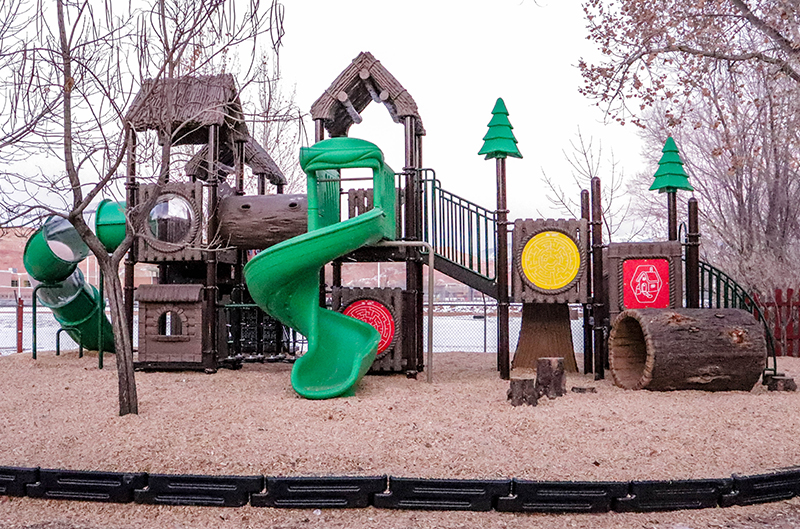
The Benefits of Natural Playgrounds
Author: Austin Stanfel
Running in an open field and climbing trees is the freest a child can feel, but it can be daunting for parents. That’s why playgrounds were created. When children play outside, they usually want to feel like they are within and a part of nature, but most playgrounds are designed with primary colors, or to look like things other than nature. The best thing to do is to take your children to playgrounds that have natural elements, like wood and leaves, and natural colors like brown and green.
Natural elements help kids play better, get more exercise, and develop more skills. says, “most of the studies agree that kids who play outside are smarter, happier, more attentive, and less anxious than kids who spend more time indoors.” Being outside in natural environments helps kids use their imagination, take risks, and may even boost their immune system.
When children play outside, they have the opportunity to be messy, as opposed to being inside and not making a mess. Playing in dirt and mud is good for kids, and according to this article from communityplaythings.com, “Scientists say regular exposure to the bacteria may help reduce a child’s vulnerability to depression.” Mud can’t do much harm, and allowing children to play in it can bolster creativity.
It is essential to build natural playgrounds in nature. Surrounding the area with trees, bushes, and flowers makes the children feel more connected to nature, and because plants naturally release oxygen into the air, they will be able to breathe better and more refined air.
One aspect of playgrounds like this is that it gives children several options for play, so they do not get bored. Structures like rock walls can challenge them, because they have the option to fail and try again, striving to reach the top. Children like to experience new things when they play—so having a playground that can be moved around may be better than one that is structured and unmoving.
With natural surroundings, children have more opportunities to socialize with other children. Building relationships is a vital skill for children to learn, and what better way to do it than in nature? Fantasy play can occur between children if there are fewer things to play with.
The best part of playing in natural playgrounds is vitamin D exposure. Sunscreen is still necessary, but getting vitamin D from the sun is so good for children, as it aids in immune system health and growth.
Ditch the indoor play places and the plastic outdoor playgrounds, and get your child and yourself back to nature at an outdoor, natural playground. You can only benefit from the exposure.

